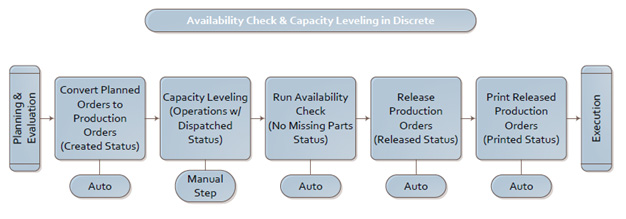SAP Shop Floor Control – Maximize the Usage to be Efficient in Discrete Manufacturing
Publish Date: December 13, 2017Introduction
In any industry, production planning and execution is crucial wherein the facilities needed are determined and arranged. A production plan is made periodically and comprise activities like
- Determination of the required raw material or parts and factory load to satisfy the desired order required.
- Matching the expected level of production to the existing resources and required resources
- Scheduling & choosing the actual work to be started in the manufacturing facility
- Setting up and delivering production orders for production facilities
A critical factor is to estimate the productive capacity of the available resources accurately. Production planning should always consider the material availability, resource availability and knowledge of future demand. The business challenge here is the visibility of machine and material availability on the floor before taking to production execution.
How can SAP PP Tools help?
Availability Check
Availability check is an essential and integral part of the business process and determines if the required delivery date can meet the demanded delivery quantity. Here the system takes into account pre-delivery activities such as scheduling for picking or packing and the time it takes to produce or obtain the material. It also performs several background functions such as backorder processing, rescheduling, and ATP quantities.
Capacity Leveling
This process covers capacity leveling of requirements from the production process, monitoring the capacity after different period intervals, and how the system determines the new values for the current order after changes are made to the quantities, times, and dates. Capacity leveling is used in different areas of an organization and at different planning levels with the following objectives:
-Levelling overloads and under loads at work centers
-Achieving optimum commitment of machines and production lines
-Selection of appropriate resources
The proposition here is to sequence these SAP tools to get maximum benefit as currently there is no specific way of using them or implementing them. Some projects may use only available to promise (ATP) not capacity leveling while in some cases capacity leveling may be used and not ATP. By using them in the right order, it is possible to maximize the visibility and reduce manual work. The key is to automate the steps by background jobs and introducing manual validation wherever necessary.
Process Flow

Automation
- Auto-convert the planned orders to production orders. Orders will stay in ‘Created’ status (This is Discrete Manufacturing)
- Perform Capacity leveling. This will set the operations to ‘Dispatched’ status
- Autorun availability check on the capacity leveled orders.
- Auto release production orders only where there are no missing parts. This job will keep running and releasing the production orders till they become ‘no missing parts’
- Auto print the production orders and issue travelers to the floor. This job will print only the newly released production orders per date selection.
In summary, these steps are executed between planning & execution. The overall intention is to make sure the capacity, materials are available and the orders are rightly sequenced before issuing the paperwork to the production floor.
There are quite a few different ways these tools can be used in SAP. This blog explains one of the practical solutions that could be implemented to maximize the usage.
Contact us today for more information and schedule an evaluation!
Velmurugan Arunachalam -Solution Architect – SAP PP/QM @ YASH Technologies
















